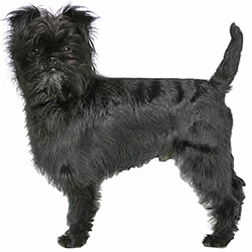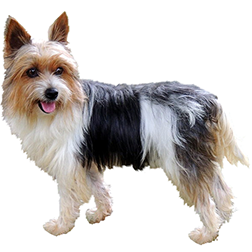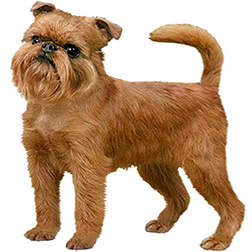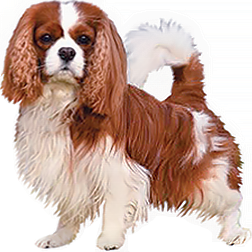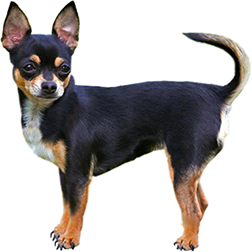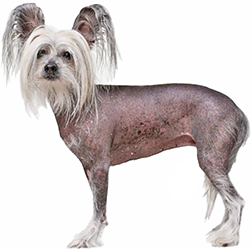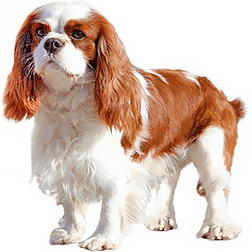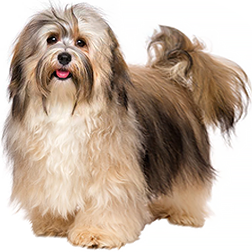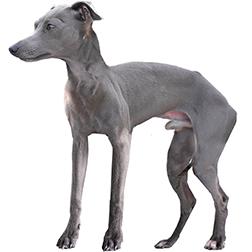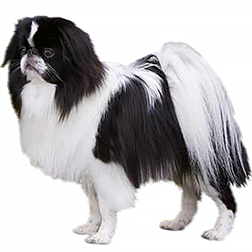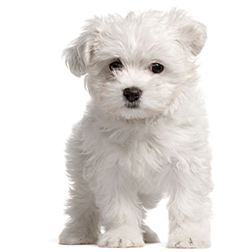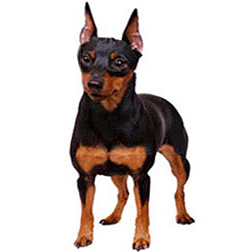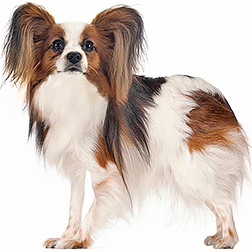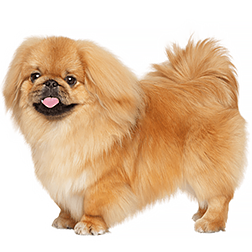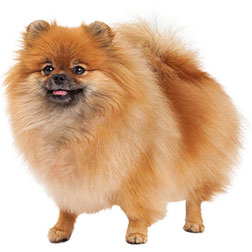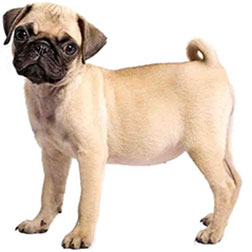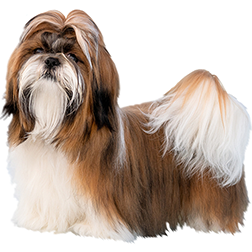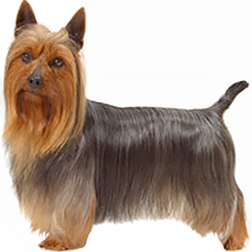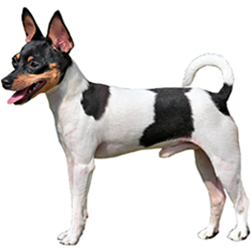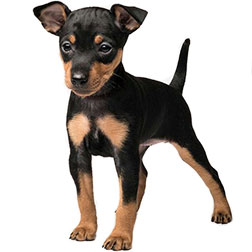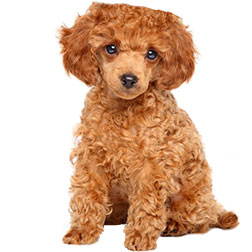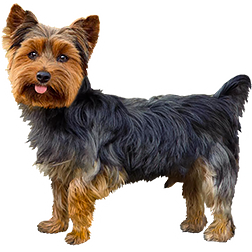Toy Dog Breeds
The Ultimate Toy Dog Group Guide
Introduction
Picture a gathering of small but mighty companions, each exuding charm, charisma, and a surprising amount of spunk. Welcome to the Toy Dog Group—a collection of breeds that might be small in stature but are immense in personality and historical significance.. Designed for companionship, these pint-sized canines have graced royal courts, curled up on aristocratic laps, and even served as vigilant watchdogs. Their compact size makes them ideal for urban living, but their lively spirits ensure they’re never overlooked.
The Toy Dog Group comprises breeds specifically developed for human companionship, emphasizing loyalty, affection, and adaptability. Despite their small size, they’re packed with energy and intelligence. From the regal Pekingese that once adorned the palaces of China to the feisty Chihuahua with roots in ancient Mexico, each breed tells a unique story. Let’s embark on a journey to explore these delightful dogs and uncover why they’ve captured hearts worldwide.
The History and Origins
The Toy Dog Group’s history is as diverse as the breeds within it. These dogs often trace their lineage to ancient civilizations, where they were revered for their companionship and symbolic value. For example, the Maltese—a breed beloved by the Romans—was considered a status symbol and often depicted in art and literature. Similarly, the Japanese Chin was a treasured gift among Asian nobility, often regarded as a symbol of prosperity.
Interestingly, many Toy breeds were not always developed solely for their charming demeanor. Some served practical purposes, such as the Affenpinscher, originally bred to keep rats at bay in German households. Over time, their size and temperament made them perfect lapdogs, elevating their status from working companions to adored pets.
From ancient tombs in Egypt featuring small dog statues to the bustling courts of European royalty, Toy breeds have seamlessly woven themselves into human culture. Their portability and endearing personalities ensured their survival and prominence, even as societies evolved.
From Ancient Roots to Modern Homes
Take a step back in time to when Toy breeds were more than just companions—they were symbols of wealth, status, and even spiritual significance. The Pekingese, for instance, was regarded as sacred in ancient China, with some believing they were incarnations of mythical lions. Meanwhile, the Maltese charmed ancient Greeks and Romans, appearing in poetry and art as cherished companions of the elite.
As time progressed, Toy dogs transitioned into modern homes, becoming beloved family members. During the Victorian era, their popularity soared in Europe as lapdogs for ladies of the court. Today, their roles have expanded even further; they’re social media stars, therapy animals, and agility champions, proving their versatility and enduring appeal.
Legends and Lore
Toy dogs have inspired countless legends and stories. One famous tale involves a Pekingese named Looty, who was presented to Queen Victoria as a spoil of war from the sacking of the Summer Palace in Beijing. This small dog became a symbol of the breed’s nobility and grace.
In another historical anecdote, a Chihuahua named Techichi is believed to have been buried with ancient Mexican nobles to guide them in the afterlife. Such stories highlight the cultural importance of these breeds and their deep connections to human history.
Cultural Connections
The cultural impact of Toy breeds is far-reaching. In Japan, the Japanese Chin was not just a pet but a living piece of art, often depicted in elaborate paintings and sculptures. In France, the Papillon—with its butterfly-like ears—was adored by royalty and often appears in portraits of European aristocracy.
Toy breeds have also made their mark in contemporary culture. The Pug’s iconic face is a favorite in memes and merchandise, while the Cavalier King Charles Spaniel’s regal bearing continues to charm audiences in films and television. These dogs are more than just pets; they’re cultural icons that have adapted seamlessly to the modern world.
Classification and Standards
What Makes This Group Unique?
Think of Toy breeds as the gems of the canine world—small, but dazzling! Their uniqueness lies in their compact size paired with larger-than-life personalities. These dogs excel in their ability to bond deeply with their humans, making them the ultimate companions. Each breed brings its own flair, whether it’s the Pekingese’s regal strut or the Papillon’s lively energy.
Meet the Judges
Classifying Toy breeds is no small feat. Kennel club judges assess these dogs against meticulous breed standards that outline everything from size and coat type to temperament. Fun fact: Did you know that judges often have heated debates over defining the perfect Pekingese gait or the precise ear placement of a Papillon? It’s an art and a science rolled into one.
Breed Wars
Every group has its controversies, and the Toy group is no exception. One ongoing debate centers on the inclusion of certain breeds. For instance, some enthusiasts argue that the Miniature Pinscher, with its bold personality, belongs more with the Terriers than the Toys. Such disputes add intrigue and passion to the world of breed enthusiasts.
Variations Across Regions
Classification standards can vary depending on the kennel club or country. For example, the American Kennel Club (AKC) classifies the Japanese Chin as a Toy, while the Fédération Cynologique Internationale (FCI) places it in the Companion and Toy Dogs group. These regional differences reflect cultural priorities and breeding histories, offering fascinating insights into how these beloved breeds are viewed worldwide.
Physical Characteristics
A Walk Through the Lookbook
Imagine a runway where each Toy breed showcases its unique beauty. The silky, flowing locks of the Maltese glide effortlessly, while the spunky Pomeranian flaunts its voluminous coat like a true showstopper. The Italian Greyhound struts with its sleek, aerodynamic frame, and the Shih Tzu wows with its luxurious, floor-length hair. Each breed brings its own flair, making this group a visual delight.
Quirky Traits and Fun Facts
Did you know that the Papillon’s butterfly-like ears aren’t just for show? They enhance its expressive demeanor, making it a favorite among agility trainers. Or that the Pug’s iconic wrinkled face has a practical purpose—to help channel sweat away in hot climates? These quirky traits are not just endearing but often rooted in the breeds’ fascinating histories and adaptations.
Diversity Within the Group
The Toy Dog Group is a celebration of variety. From the diminutive Chihuahua, barely tipping the scales, to the robust and fluffy Pekingese, this group offers a kaleidoscope of shapes, sizes, and coat types. Whether you prefer the fine-boned elegance of the Italian Greyhound or the bold, compact build of the Toy Manchester Terrier, there’s no shortage of options for every taste. This diversity is a testament to the adaptability and enduring appeal of these pint-sized companions.
Temperament and Personality
The Group’s Signature Charm
Think of Toy dogs as the comedians of the canine world! Their playful antics and larger-than-life personalities often steal the show. Whether it’s a Chihuahua proudly strutting across the living room like it owns the place or a Pug making everyone laugh with its goofy snorts, these breeds are masters at brightening your day. Loyal to their families, they thrive on affection and love nothing more than being the center of attention.
What Owners Love Most
Ask any Toy dog owner what they adore most about their furry companion, and you’ll likely hear tales of their unwavering devotion. These breeds often form incredibly close bonds with their humans, offering comfort and companionship. Who can resist the Havanese’s endearing habit of following you around the house or the Cavalier King Charles Spaniel’s soulful gaze that melts hearts? They’re small dogs with big hearts, ready to bring joy to any household.
Unexpected Personalities
While Toy breeds share some common traits, they’re not without surprises. Take the Papillon, for example: while its delicate appearance might suggest a timid personality, it’s actually a fearless and highly energetic competitor in agility sports. Or the Shih Tzu, which many expect to be a docile lapdog but often reveals a playful, mischievous streak. These delightful quirks remind us that even within a group, every dog is a unique individual.
Purpose and Roles
Original Roles and Modern-Day Marvels
Historically, Toy breeds weren’t just pampered companions; many had practical roles. The Affenpinscher was a fearless rat catcher in German households, while the Pekingese served as loyal guardians for Chinese royalty. Fast forward to today, and these breeds have adapted to new roles—from therapy dogs providing emotional support to social media stars captivating audiences with their antics.
Famous Dogs in History
Toy breeds have left their mark on history in remarkable ways. Consider the story of Gidget, the Chihuahua who became the face of Taco Bell commercials, or Boo, the "World’s Cutest Dog" Pomeranian, who gained millions of followers online. These dogs prove that small stature doesn’t limit their ability to make a big impact.
Superstars in Action
Modern Toy breeds continue to shine in various fields. The Papillon is a standout in agility competitions, effortlessly navigating obstacle courses with speed and precision. Meanwhile, the Cavalier King Charles Spaniel excels as a therapy dog, offering comfort to those in need. Whether entertaining, competing, or providing companionship, Toy dogs demonstrate their versatility and charm in every role they take on.
Training and Obedience
Training Tales
Training Toy breeds often comes with its own set of humorous and inspiring moments. Take the story of Bella, a feisty Chihuahua who once refused to fetch until her owner discovered her love for squeaky toys. Or Max, the determined Pug who mastered a complex trick routine just to earn extra belly rubs. These tales remind us of the joy and creativity involved in working with these intelligent little dogs.
Tips from the Pros
When training Toy breeds, patience and positive reinforcement are key. Use high-value treats and keep sessions short to match their attention spans. For example, many trainers recommend turning training into a game, like teaching a Papillon to jump through a hoop or a Shih Tzu to spin on command. Focus on building trust and making the process enjoyable for both you and your dog.
Challenges and Triumphs
While Toy dogs are highly trainable, their spirited personalities can sometimes pose challenges. Some breeds, like the independent-minded Italian Greyhound, may require extra motivation. Others, like the bold Miniature Pinscher, might test boundaries. Creative techniques, such as clicker training or using food puzzles, can help channel their energy and focus. Ultimately, the rewards of training these dogs are immense, as they not only learn impressive skills but also deepen their bond with their humans.
Health and Care
Keeping Them Happy and Healthy
Caring for Toy breeds is like maintaining a luxury car: they require precision and attention, but the rewards are worth it. Regular vet checkups, a balanced diet, and daily grooming are essential to keep these small dogs thriving. Toy breeds are also prone to dental issues due to their tiny jaws, so brushing their teeth isn’t just recommended—it’s a must!
Weird but True
Did you know that some Toy breeds, like the Pekingese, have unique health quirks due to their flat faces? This trait, known as brachycephaly, makes them adorable but can lead to snoring and breathing issues. On the brighter side, many Toy breeds are known for their longevity—some Chihuahuas and Maltese have been known to live well into their late teens!
Designing the Perfect Dog Space
Creating the ultimate space for your toy dog is like designing a mini kingdom for a pint-sized monarch. These dogs thrive in cozy, comfortable environments where they feel secure. Think plush bedding, soft blankets, and even a few elevated perches to observe their domain. Add a touch of whimsy by setting up a "toy treasure chest" to store their endless squeaky toys and chewables. Don’t forget to include easy access to windows; many toy dogs love to watch the world go by and bark their opinions on passing squirrels or mail carriers.
City or Country Life?
Whether you live in a bustling apartment or a sprawling rural estate, toy dogs can adapt with ease. Their compact size makes them perfect companions for urban living. A sunny corner of your living room can become their playground, while daily walks through the neighborhood provide enough adventure to keep them satisfied. For country life, keep an eye on these curious explorers—they might find the idea of chasing a butterfly too tempting to resist. Remember, they’re small enough to squeeze through fences, so secure boundaries are a must.
Climate and Quirks
Toy dogs have varied reactions to climate changes, often tied to their coat type. A Chihuahua might shiver at the slightest chill, while a Shih Tzu could find humid summers overwhelming. Invest in tiny sweaters for colder months and consider cooling mats or fans during the heat. Watching a Pomeranian strut their stuff in winter gear is as entertaining as it is practical—these little fluff balls know how to make a fashion statement while staying warm.
Fun Facts and Quirks
Did You Know?
Did you know that the Pekingese was once a royal lapdog, carried around in the sleeves of Chinese emperors? Or that the Papillon’s name means "butterfly" in French, a nod to its wing-like ears? These dogs come with centuries of history and charm that make them truly one of a kind.
Bizarre Habits and Endearing Oddities
Toy dogs often develop quirky habits that keep their owners endlessly entertained. A Maltese might insist on sleeping in the exact center of your bed, no matter how much space you give them. Meanwhile, a Pug may spend hours trying to "talk" to their reflection in the mirror. And let’s not forget the Italian Greyhound’s signature "sun worship," where they’ll stretch out in any sunny patch they can find, no matter how inconvenient the location.
Financial and Practical Considerations
Breaking the Bank or Budget-Friendly?
Owning a toy dog can range from budget-friendly to extravagant, depending on your preferences. Their small size means less food and fewer grooming supplies, but premium care products or boutique grooming services can add up. Initial costs, including adoption fees or breeder prices, can vary widely based on the breed’s popularity. However, the emotional rewards of owning these loving companions are priceless.
The Real Cost of Happiness
Imagine coming home after a long day to the joyful antics of a Havanese spinning in circles or the gentle nuzzle of a Cavalier King Charles Spaniel. These moments remind you that while there are financial responsibilities, the happiness and love these dogs bring far outweigh any cost. They don’t just share your home—they fill it with joy.
Ethical and Legal Considerations
Being an Ethical Advocate
Responsible ownership begins with making informed choices. Research ethical breeders who prioritize health and temperament over profit, or consider adopting from rescue organizations. By supporting ethical practices, you’re helping to ensure a brighter future for these beloved breeds.
Unleashing the Rules
Legal considerations for toy dogs often revolve around housing regulations and local leash laws. Many apartments and condos have size restrictions, making toy dogs an ideal fit. Ensure your pet is microchipped and properly registered to avoid issues—after all, no one wants their Yorkie’s "great escape" to lead to unnecessary complications.
Group-Specific Activities and Sports
From Couch Potatoes to Champions
Don’t let their size fool you; toy dogs are capable of more than just being lap warmers. Agility courses tailored to their stature can be a great way to engage their minds and bodies. For less intense activities, puzzle toys or interactive games keep them entertained indoors.
Tail-Wagging Competitions
Toy dogs shine in events like conformation shows and obedience trials. Papillons and Poodles often steal the spotlight with their intelligence and grace. For something lighthearted, consider entering your dog in a local costume contest—because who doesn’t love seeing a Pomeranian dressed as a lion?
Famous Breeds and Notable Dogs
Spotlight on Stars
Toy dogs have left their paw prints on history. The Chihuahua, famously featured in movies like Legally Blonde, has become a pop culture icon. Meanwhile, Queen Victoria’s beloved Pomeranians helped popularize the breed in England.
Paws in Pop Culture
From Toto in The Wizard of Oz to the animated adventures of The Secret Life of Pets, toy dogs have charmed audiences for generations. Their outsized personalities make them natural stars on both the silver screen and social media platforms.
Practical Tips for Owners
Pro Tips for Newbies
Start with a routine! Toy dogs thrive on consistency, whether it’s mealtime, potty breaks, or bedtime. Invest in sturdy but lightweight harnesses for walks—collars can be harsh on their delicate necks. And don’t underestimate the power of positive reinforcement during training.
Common Owner Missteps
One common mistake is underestimating their intelligence. Toy dogs might be small, but they’re sharp. Failing to provide mental stimulation can lead to mischief. Also, resist the urge to carry them everywhere—even tiny paws need exercise.
Resources and Support
Join the Pack
Connect with fellow enthusiasts through breed-specific clubs and online communities. Organizations like the American Kennel Club (AKC) offer valuable resources, including training tips and event listings.
Best Reads for Dog Lovers
Explore books like The Toy Dog Handbook or Small Dog, Big Personality: A Guide to Toy Breeds. Blogs and forums dedicated to toy dog owners can also provide a wealth of advice and camaraderie.
Conclusion
Why You’ll Fall in Love
Toy dogs are more than their petite frames; they’re loyal, loving, and endlessly entertaining companions. Their adaptability, charm, and unique personalities make them an irresistible choice for any dog lover.
Your Next Adventure Awaits
Whether you’re considering bringing home your first toy dog or simply learning more about this delightful group, the journey promises laughter, love, and countless cherished moments. Open your heart, and let the joy of toy dogs transform your life.
Did You Enjoy this Article? Share it and Help Us Spread the Word!
If you found this article helpful, we'd appreciate it if you could share it with your friends or link to it from your website, blog, or group! You can also use the convenient social share tabs on the left side of the screen to instantly share this page to your social media feed. For more ways to support and promote the American Breeder Community, visit our Share & Promote Together page for social media posts and memes you can copy and share. Your support means the world to us!
Disclaimer: The information provided in this article is for general informational purposes only and does not constitute legal, medical, financial, or professional advice. While we strive for accuracy, we make no representations or warranties regarding the completeness, accuracy, reliability, or suitability of the information. Please consult with a professional before making decisions based on the content provided. American Breeder Inc. assumes no responsibility for any errors or omissions or for the results obtained from the use of this information.

